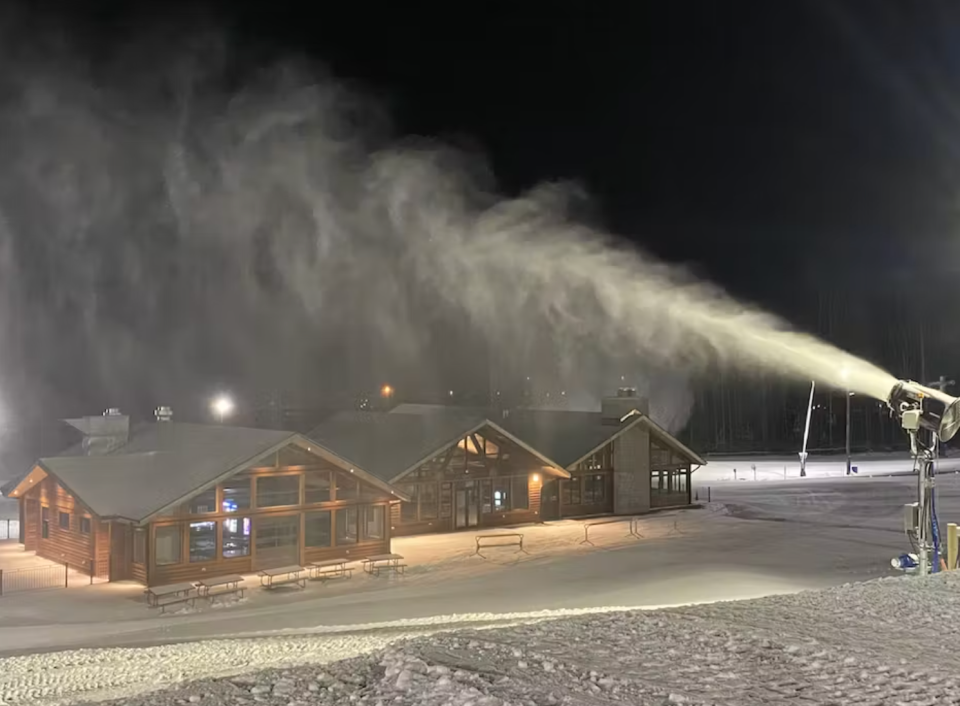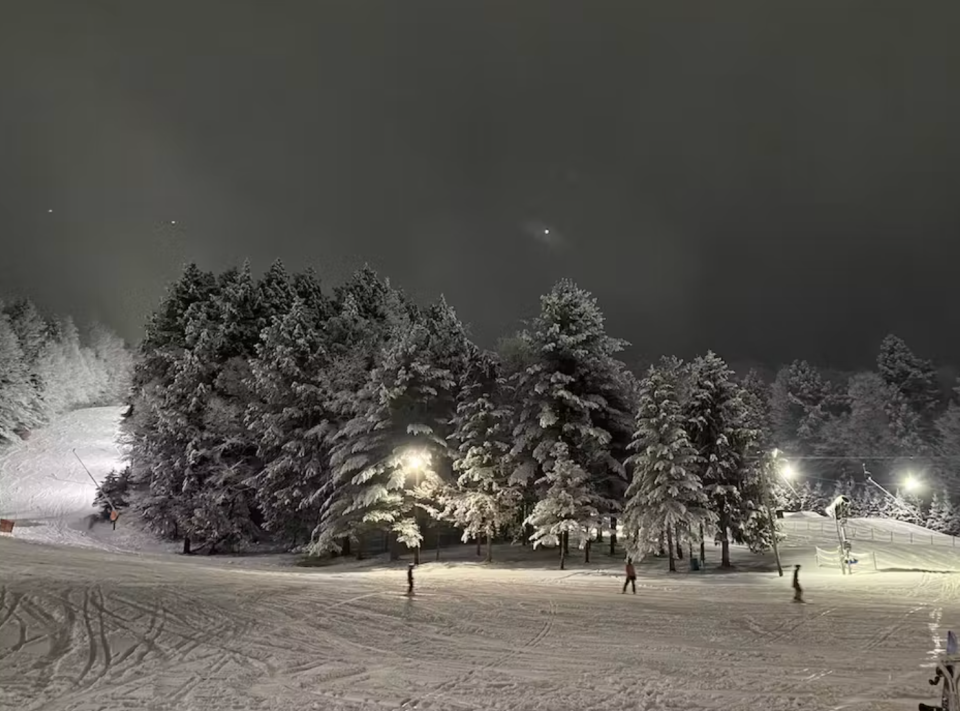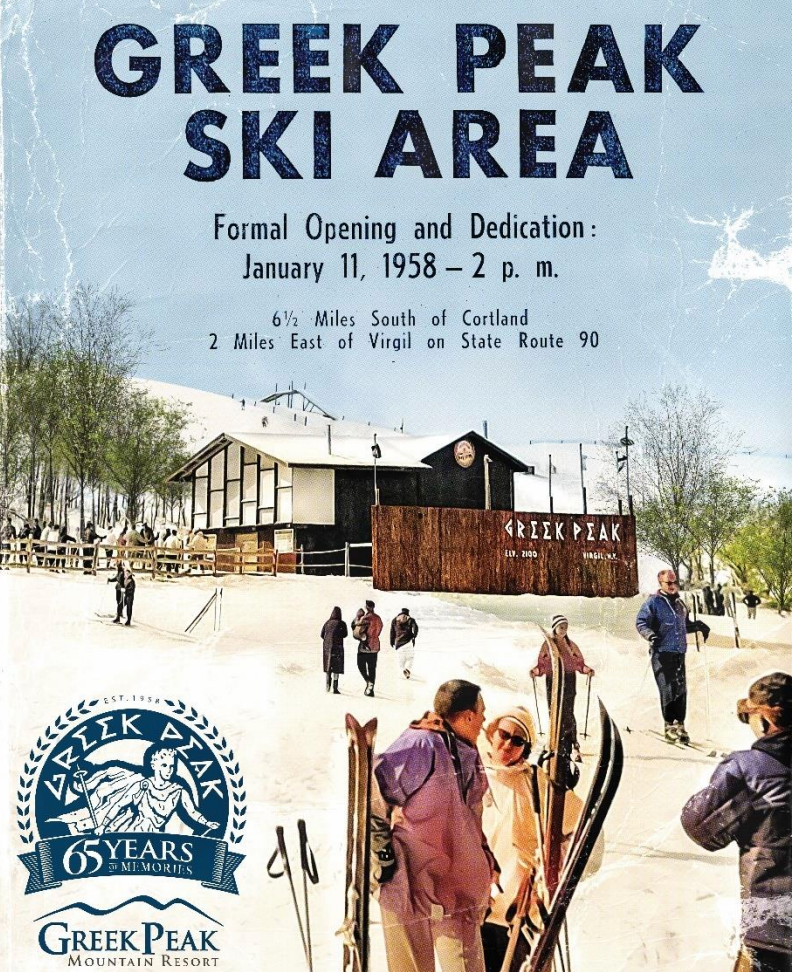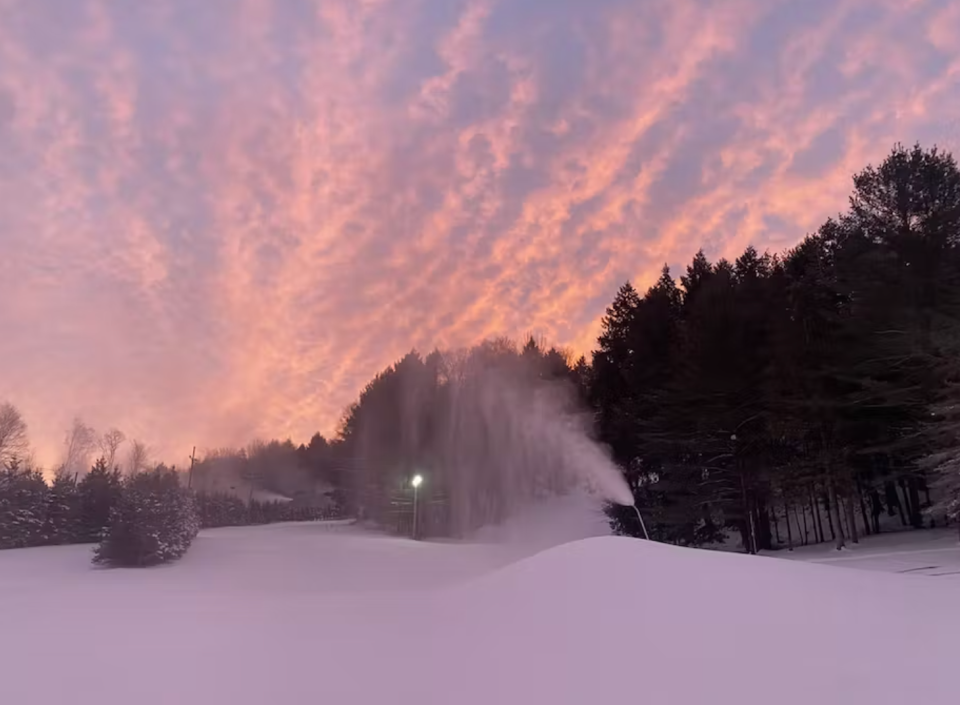Low-snow winters lead local ski resorts to adapt when Mother Nature fails to deliver
- Oops!Something went wrong.Please try again later.
Artificial snow-making – using machines to spray a mixture of water and compressed air to freeze into snowflakes – has been used by the ski industry since the 1950s. With climate change posing a threat to the industry local resort owners claim the technology has become more important than ever.
According to the National Weather Service (NWS), the average annual temperature in Central New York leaped from 48.3 Fahrenheit in 2018 to 51.8 Fahrenheit in 2023. Meteorologist Danielle Knittle said there’s been a distinctive uptick in the past five years.
As expected, higher temperatures bring less snowfall. Experts predict more than half of ski resorts worldwide could be at risk for snow scarcity by 2100 due to global warming.
To fight this, resorts across the Mohawk Valley now rely on artificial snow.

A 'new normal'
Woods Valley Ski Resort in Westernville underwent renovations in 2020 when over $3 million was invested into the creation of a base lodge. Additional improvements since have included two new conveyor lifts, a rental shop, and snow tubing.
To combat increasing temperatures funds have also been allocated toward snow-making.
Owner and President of Woods Valley Ski Resort Tim Woods noted that despite inclement weather patterns attendance has increased over the years.
“In terms of visitors, we are tracking better than our 10-year average to date," he said. "I attribute this to our snowmaking improvements. Now we can generate more snow while using less energy. At present, we have more than 40% of our terrain open.”

The resort was among the first snow tubing sites in the state to open this year, Woods said.
“The likelihood of a low-snow winter has become our new normal,” he added. “Climate change has driven resort operators to invest in snowmaking systems. Without which we wouldn’t have had a ski season this year, or last.”
Return-on investment
Nestled in New York’s Finger Lakes region is Greek Peak Mountain. The all-season ski resort invested $3.5 million over the past three years of a five-year plan to develop snow-making infrastructure and equipment.
Despite low snowfall Director of Marketing at Greek Peak Mountain Resort Jon Spaulding said the slopes were open for more days this past year than prior.
“Two years ago we offered 107 ski days to our guests, whereas last year we were open for 114. Our improved snow-making system allows us to fill 26 football fields of terrain a foot deep in just 24 hours.”

To meet the resort's five-year plan, 57 new KFD snow guns and hydrants have been installed. The east mountain pumphouse was also replaced.
“The new pumps doubled water output from 900 to 1,800 gallons per minute,” said Spaulding. “So, now we can run our snow guns more efficiently.”
To attract more visitors, Greek Peak linked a virtual webcam to their website. To get a glimpse of the terrain before hitting the slopes visit www.greekpeak.net.
Legislative action
Spaulding noted how climate change has recently become a popular topic of conversation within the ski industry.
In 2011 the National Ski Areas Association (NSAA) created a climate challenge. NSAA’s voluntary program advocates for regulatory legislation to curb carbon emissions while supporting ski areas with information on green snow-making technology, explained Spaulding.
In December state Sen. Joseph Griffo, R-Rome, introduced new legislation (S5523) to eliminate the sales tax on the purchase of energy-efficient ski lifts and snowmaking equipment.
“New York’s ski industry has an economic impact of over $1 billion,” said Griffo in a statement. “To ensure long-term sustainability many ski areas will come to rely on snowmaking systems.”
Woods acknowledged that the impact of snow sports exceeds mere economic revenue.
“Skiing, snowboarding, and tubing are multi-generational life sports," Woods said. "In the age of virtual entertainment, they offer a pathway to nature and reality. People were never meant to hibernate.”
Spaulding seconded the notion.
“Snow sports aren't just fun," he said. "Being outside during the winter is good for your physical and emotional well-being.”

Chillers enter the chat
Ski resorts are not the only outdoor recreation sites adapting to warmer winters.
Utica recently invested over $20 million of its American Rescue Plan Act (ARPA) funding into transforming the Roscoe Conkling Park, at the foot of Val Bialis hills, into an all-season attraction.
Former Mayor Robert M. Palmieri opened up the new ice rink to the public on New Year's Eve and New Year’s Day. While permanent hours have yet to be established the project is projected to finish by the end of the month.
Once completed locals will be able to ice skate outdoors. In the spring the rink will convert into a public pickleball court.
“The combination of ice skating in the winter and pickleball in the summer will bring back traditions while moving Utica into the future,” said Palmieri in a statement. “We want to make a sustainable city that is fun to live in and visit.”
To accommodate for the uptick in global temperatures, Palmieri said a “chiller” would be installed– a machine capable of making ice in temperatures up to 50 degrees.
This article originally appeared on Observer-Dispatch: Ski resorts in Mohawk Valley are making their own snow

